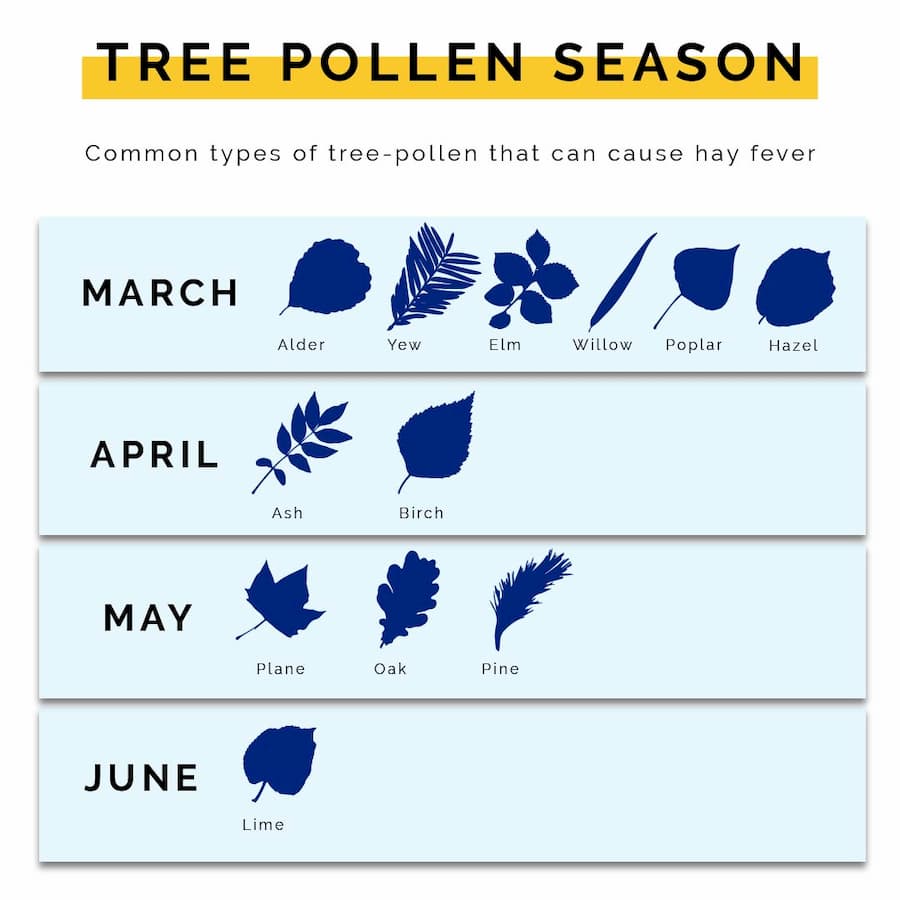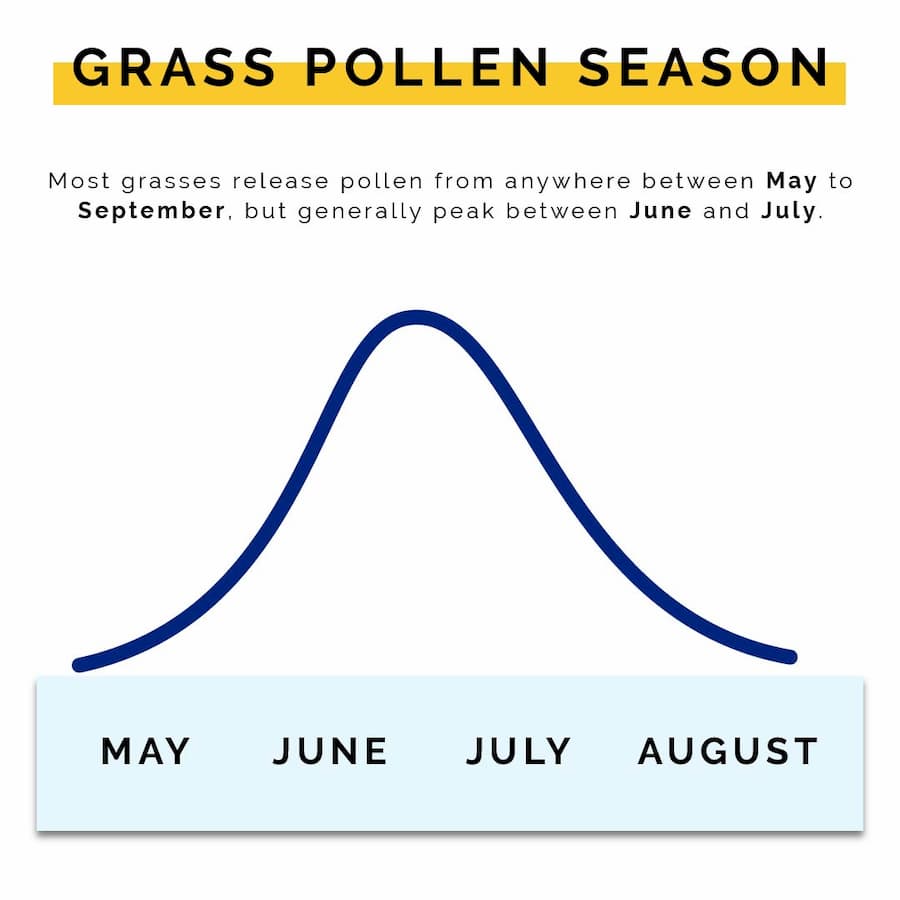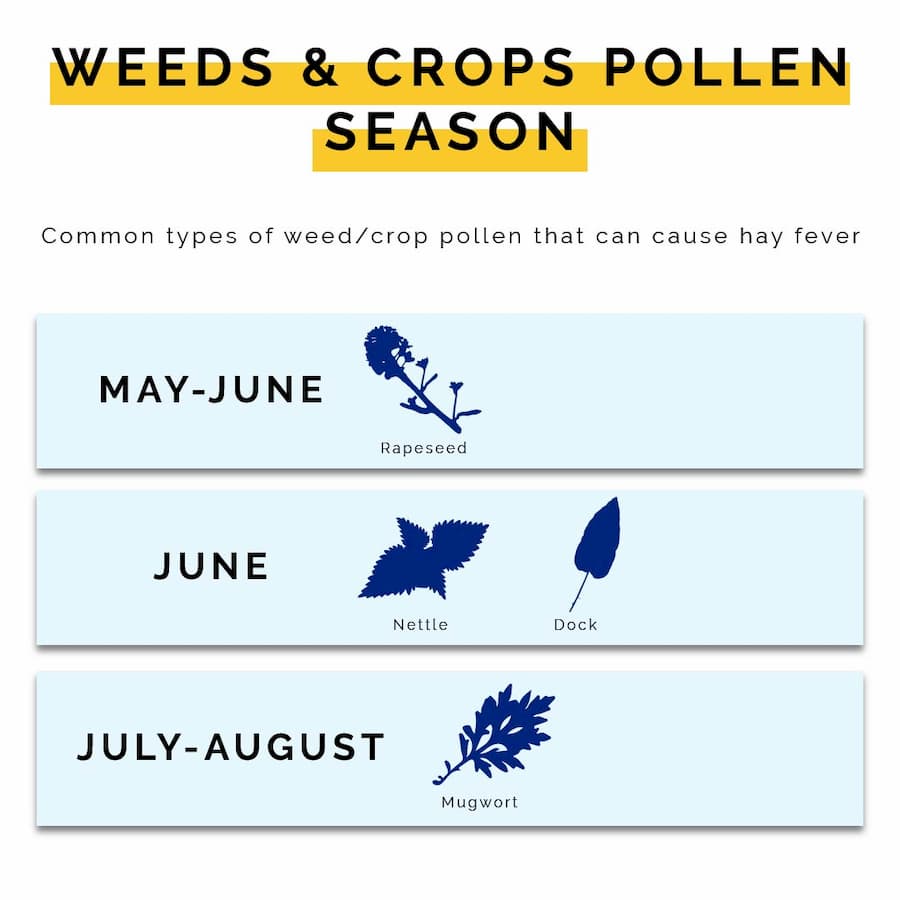
Suffer From Hay Fever?
Do you suffer from allergic rhinitis, more commonly known as hay fever? You’re not alone. In fact, there are over 10 million hay fever sufferers in the UK [1]. The pollen sensitive among us know the signs well – endless sneezes, red and weepy eyes that are maddeningly itchy (known as allergic conjunctivitis), and a constantly dripping nose alongside blocked sinuses. Frankly it’s no fun, and unfortunately for many of us it can put a damper on the Spring and Summer seasons.
What Causes Hay Fever?
Hay fever is caused by an allergic reaction to pollen, a fine powder released by plants as part of their reproductive cycle. Sufferers can be sensitive to different kinds of pollen, including from grasses, trees and weeds.
So what actually happens in the body that causes us to sneeze when we inhale pollen? It’s caused by histamine, a compound that helps protect us from harmful infections. Histamine can sometimes overreact to something relatively harmless – in this case, pollen. This is known as an allergic reaction. When the body detects an allergen such as pollen, histamine causes our body to respond as if we were being attacked by a virus, with the symptoms of hayfever actually being protection mechanisms generated by our immune system.
This is why Antihistamines can be very effective at treating the symptoms of hay fever, as they reduce the histamine response in the body.
What Time Of The Year Is The Worst For Hay Fever?
Generally, the majority of hay fever sufferers experience the worst of symptoms anywhere between late March and September, though pollen can release as early as January. The main factor to watch for is the “pollen peak”, the moment in time when certain plants release the most pollen during their cycle.
However, this is all variable depending on the plant in question. It’s also dependent on the person, as not all hay fever sufferers react to the same pollen. Though the vast majority of hay fever sufferers react to grass pollen, others also find trouble with tree pollen and flowering plants.
Confusing, right? To make things a bit easier, we’ve created a pollen guide, letting you know what parts of the season to prepare for.
Tree Pollen Season
Tree pollen starts releasing and peaking earlier in the year than any other kind of pollen, so if you’re particularly sensitive to these plants then you need to prepare for hay fever early in the year, just before spring.
March is the peak month for Alder pollen, Yew pollen, Elm pollen, Willow pollen, and Poplar pollen. Hazel pollen tends to peak here, but can begin as early as February [2].
April is the peak month for Ash pollen, with Birch pollen peaking between April and May.
May is the peak month for Plane pollen, Oak pollen, and Pine pollen.
June is the peak month for Lime pollen.

Grass Pollen Season
When it comes to hay fever, grass is the most common culprit. If your nose and throat start getting tingly at the thought of mowing a lawn, then pay attention to these peak pollen times!
Most grasses release pollen from anywhere between May to September, but generally peaks between June and July.
Some grasses, such as Timothy grass, pollinate in the early autumn. That’s why it’s important to prepare for hay fever to last even past the summer months.

Weeds & Crops Pollen Season
Various other plants can cause hay fever too, so we’ve listed some of the more common agitators here.
May is the peak month for Oil Seed Rape, a peak which can stretch up to June.
June is the peak month for Nettle pollen and Dock pollen.
July is the peak month for Mugwort pollen, potentially lasting through August.

How To Cope With Hay Fever
Sometimes we get lucky with a mild case of hay fever, managing to get by with boxes of tissues and a chorus of sympathetic ‘Bless You’s. Other times, our allergic response can be really disruptive to our lives, particularly for those with asthma.
There are plenty of Hay Fever Home Remedies that can help out, but for proven relief you can always turn to OTC treatments such as antihistamine tablets and nasal sprays. Speak to your local chemist about which type of medication is right for you. If you have already tried these, and find you need something stronger, there are also prescription and Pharmacy strength options: antihistamine medication, nasal sprays and eye drops.
• Telfast, and its generic counterpart Fexofenadine, are non-drowsy antihistamine tablets that reduce hay fever symptoms.
• Avamys and Beconase nasal sprays decrease allergic inflammation.
• Sodium Cromoglicate 2% Eye Drops effectively treat allergic conjunctivitis.
There’s no need to suffer the symptoms this summer – order your hay fever medication today from e-Surgery with antihistamines available from just £12.50, delivered quickly and conveniently to your front door in fully recyclable packaging.
Your Summer Health
Hay fever isn’t the only health issue to keep in mind this summer – don’t forget about sun protection, or the importance of staying hydrated. Don’t worry, we’ve got you covered. Find out if Sunblock Pills Really Work, and make sure to check out our 5 Top Tips To Stay Hydrated This Summer.
In addition to our pollen guide, make sure to check out your local Pollen Forecast using the Met Office service [3].
Sources
- Illnesses and Conditions: Hayfever | NHS Inform
- Pollen Allergy – Peak Seasons in the UK | London Allergy & Immunology Clinic
- Pollen Forecast | Met Office
Further Reading
- Hay fever | NHS
- Hay Fever (Allergic Rhinitis) | Allergy UK
- FEXOFENADINE HYDROCHLORIDE | BNF







